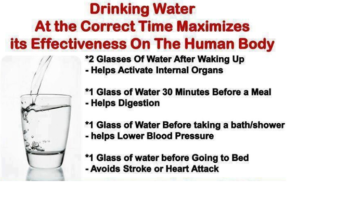We’ve all experienced cravings for unhealthy foods at some point, but often, even after indulging, the cravings don’t go away.
According to scientists, these cravings may actually signal a deficiency in certain minerals. However, addressing these deficiencies effectively requires getting minerals from natural food sources.
Here’s a breakdown of what your food cravings could mean:
Craving Sugary Foods: Deficiency in chromium, carbon, phosphorus, sulfur, or tryptophan
A craving for sugary treats may stem from a deficiency in one or more key nutrients:
- Chromium: Helps regulate blood sugar levels.
- Carbon: An element that sugar is composed of.
- Phosphorus: Involved in energy production.
- Sulfur: Aids detoxification.
- Tryptophan: Regulates serotonin, affecting mood.
To manage these cravings, it’s important to adjust your diet and increase your intake of these nutrients.
Craving Chocolate: Deficiency in magnesium
Magnesium is a common deficiency in Western diets, and it’s essential for over 300 biochemical processes in the body, including those related to relaxation. Signs of magnesium deficiency include insomnia, anxiety, irritability, and high blood pressure.
Check this later: The Truth About Magnesium Deficiency—Is It Sabotaging Your Health?
While chocolate contains a small amount of magnesium from cacao, it’s better to get your magnesium from foods like beans, seeds, fish, nuts, dark leafy greens, and blackstrap molasses, which can help curb your chocolate cravings.
Craving Refined Carbs (Bread, Pasta): Deficiency in nitrogen
Craving refined carbs like pasta or bread might mean your body is low in nitrogen, which is crucial for building nucleic acids and proteins. To fix this, increase your intake of nitrogen-rich fruits and vegetables.
Craving Ice: Deficiency in iron
Although rare, craving ice is a strong indicator of iron deficiency. To boost your iron levels, eat more leafy greens, meat, sea vegetables, and blackstrap molasses.
Craving Salty Foods: Deficiency in chloride or silicon
If you’re craving salty snacks, your body might need more chloride or silicon. Try eating more nuts, seeds, and fish to address this deficiency.
Craving Oily or Fatty Foods: Deficiency in calcium
Craving fatty foods may be due to a lack of calcium. To increase calcium levels, include more cheese, turnip greens, broccoli, and raw milk in your diet.
See also: Relieve Knee and Joint Pain with This Powerful 3-Ingredient Smoothie
Additional Tips to Prevent Craving Unhealthy Foods (From Healthline):
- Stay Hydrated: Drinking water before meals can reduce cravings and help with weight loss.
- Increase Protein Intake: Protein can curb your appetite and reduce the likelihood of overeating.
- Distract Yourself: Engage in activities like chewing gum, taking a walk, or showering to distance yourself from cravings.
- Meal Planning: Planning meals for the day or week removes uncertainty, which often leads to cravings.
- Avoid Extreme Hunger: Always have a healthy snack on hand to prevent overeating.
- Manage Stress: Stress can trigger cravings and overeating, especially in women.
- Get Enough Sleep: Sleep deprivation can cause hormonal imbalances, leading to increased cravings and poor appetite control.
- Eat Regular Meals: Eating balanced meals helps prevent hunger and cravings while ensuring you get essential nutrients.
- Shop Smart: Eating before grocery shopping reduces the chances of impulse buying and cravings.





